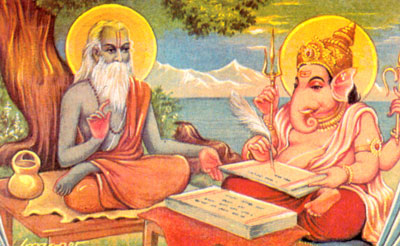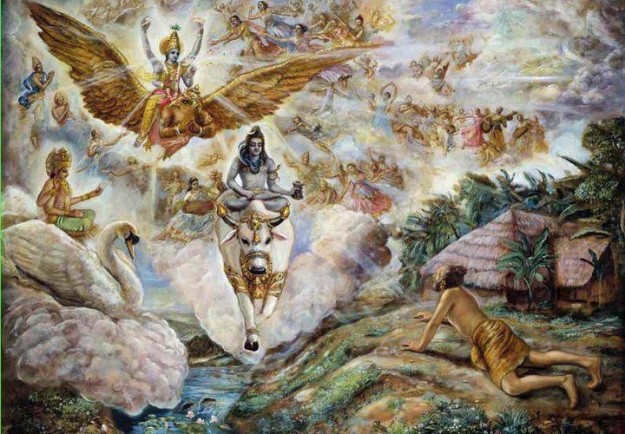El sexto libro del Mahabharata es el “Libro de Bhisma”. En este libro se describen los 10 primeros días de la batalla de Kurukshetra, entre los Pandavas y los Kauravas.
En el noveno día, los Pandavas reflexionan en la forma de matar a Bhisma, el comandante de los Kauravas. Como no encuentran solución, deciden preguntarle directamente a Bhisma. Se presentan sin armas en su carpa, y Bhisma los recibe y les dice que aceptaría ser matado, sin embargo como combatiente entrenado no dejará la batalla.
Bhisma les sugiere que pongan a Sikhandin en frente a él durante la batalla, ya que Bhisma juró nunca luchar contra él. Los Pandavas siguen esta recomendación y después de poco tiempo, cae mortalmente herido por tantas flechas que forman una cama a su alrededor.
De repente todos los combatientes de los dos lados se detienen para rendirle homenaje a Bhisma.








